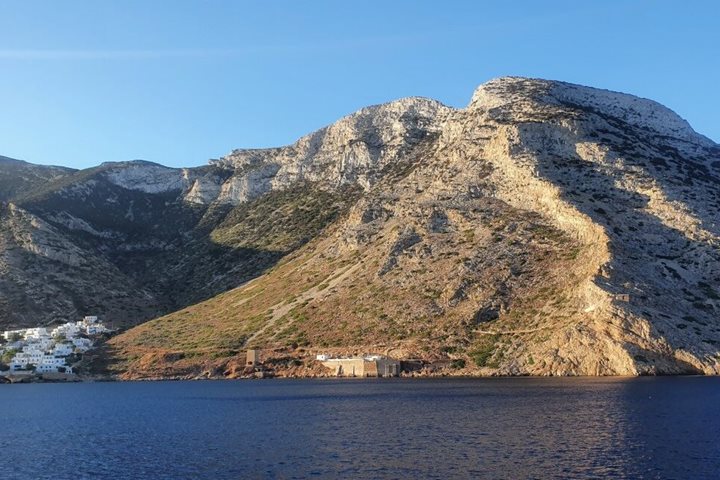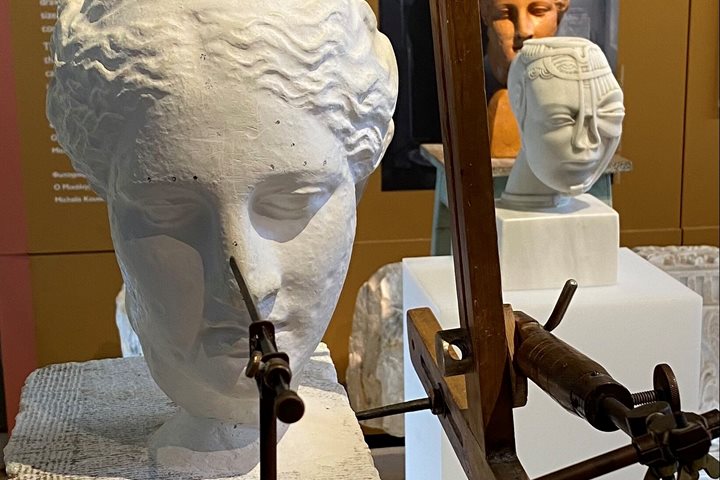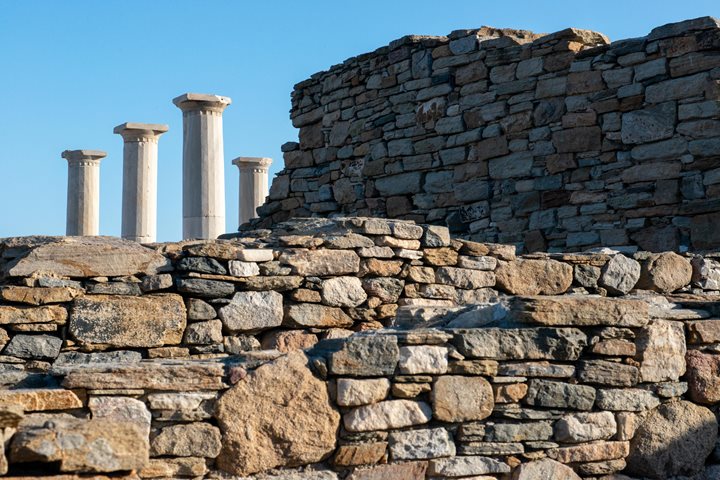Santorini is perhaps one of the more iconic islands of the Cyclades, if not the most iconic locations to visit in all of Greece. Its picturesque, gleamingly white washed buildings and blue domed churches adorn the ridges and cliff sides, providing spectacular foreground for striking vistas. Enchanting as these superficialities are, it is its unique history, both culturally and geologically that make this location such a fascinating place to spend the day exploring. Originally called Thira, before it was named for the exiled Saint Irene, the island is shaped like a crescent moon. This is a relatively new development occurring around 1628 B.C., depending on your definition of relative, when a massive earthquake triggered a significant volcanic eruption with ash extending all the way to Egypt. This resulted in a 76 square kilometer caldera in place of where previously the majority of the ancient island had existed. Our morning begins as we sail into this impressive feature, shafts of light peak through the early morning cloud cover, glittering on the deep blue waters.
Once ashore we make our way to the town of Oia, where the steep slopes dotted with such scenic houses that one can almost forgive every travel guidebook for choosing this as their cover photo. For the young, or the young at heart, there is an opportunity to ride donkeys up and down the twisting switchback path to the water, led fearlessly by our historian and now self proclaimed Donkey Czar, Rebecca Ingram. After photographically mimicking all the postcard angles and seeing the fort, it is time to delve a little deeper into the richness of this locale. To aid us in this endeavor we take a respite from the powerful sun in a shady restaurant in the town of Pirgos for a classic “mezedes” lunch. Santorini is a comparatively lush Cycladic island and is well known for its tomatoes, eggplant, and white wine, all of which we sample happily.
Bellies satisfied now it is our mind’s turn and it is off to the pre-history museum where artifacts from the culture that existed here before the eruption have been marvelously preserved. From what we can see here on display and from the excavation site itself, the settlement city of Akrotiri, this was a very artistic and sophisticated trading culture very similar to the Minoans of nearby Crete. If stunningly ornate frescos and intricately detailed jewelry were not enough to convince anyone of the advanced nature of the people that lived here three-and-a-half-thousand years ago, the evidence of a second story plumbed toilet certainly ended that argument. With such luxuries now on the mind, it was time to return to our lavish home away from home where after a full day in the heat, the captain had arranged for us to swim from the ship. Plunging into the cool blue water and floating in the salty Mediterranean and reflecting upon how much better it is to get past the surface and truly experience a place.







